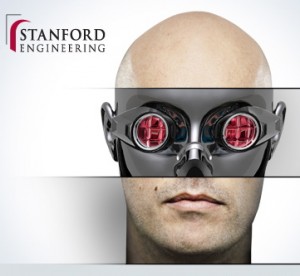By Anne Raith
Professor Sebastian Thrun has given his lecture on artificial intelligence at Stanford University more than once. He knows that a lot of students are interested in his introductory course – almost 200 students have showed up in past years. But this fall, it will be different, even for him. There will be more than 100,000 students from all around the world who will listen to him – online.
Introduction to Artificial Intelligence is one of three classes that the Stanford computer science department will offer as a free online course this fall. As of yesterday, more than 124,000 people had enrolled: high school students, professionals and retirees from North and South America, Europe and Africa.
“We want to open our lectures and bring education to places that can’t be reached today, to people that haven’t had access to higher education,” says Thrun, a Google Fellow and one of the world’s best-known artificial intelligence experts.
Professor Andrew Ng, whose course Machine Learning will be also be online, adds that the proliferation of Web access is democratizing education in ways it couldn't have been done before. “In the last ten years, information technology has disrupted many different industries. Somehow the Internet hasn’t quite made it into the classrooms," he says. "But with online education we can provide education to the world much more cheaply and change the horribly inefficient way we have delivered education till now, just lecturing to our students.”
With its Stanford Engineering Everywhere (SEE) program, the university already offers some of its most popular engineering classes free of charge, video lectures, reading lists and other handouts included. But SEE was only the first step: This time students can follow and attend a class online and get a Statement of Accomplishment when they participate regularly. “But it will be tough,” professor Thrun warns. “I want to keep up our Stanford level. The students have to deal with linear algebra and probabilistic methods. And they have to be willing to work 10 to 15 hours a week, do their homework, and pass tests. We’ll have strict deadlines.”


